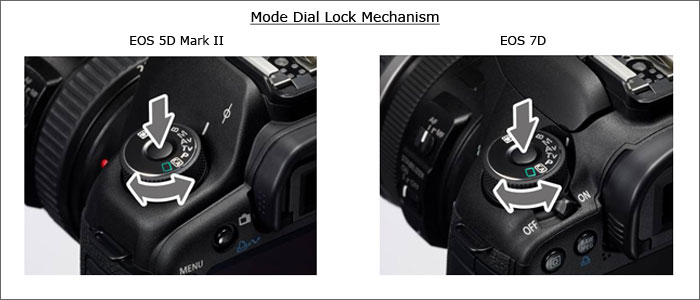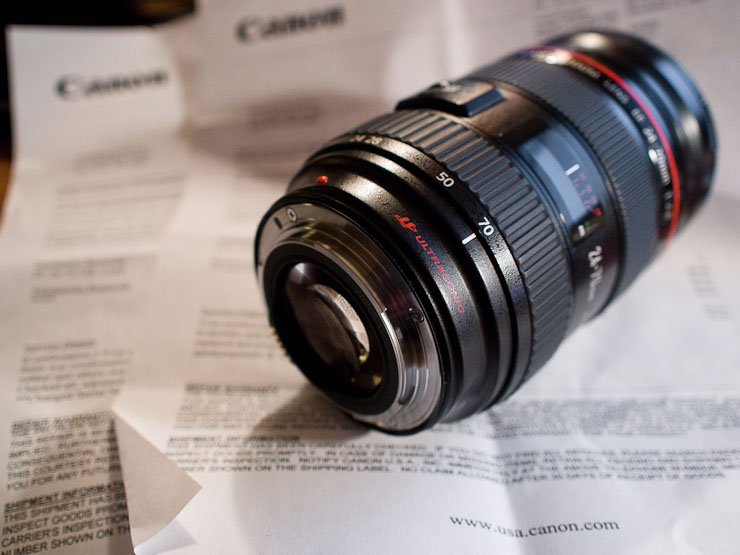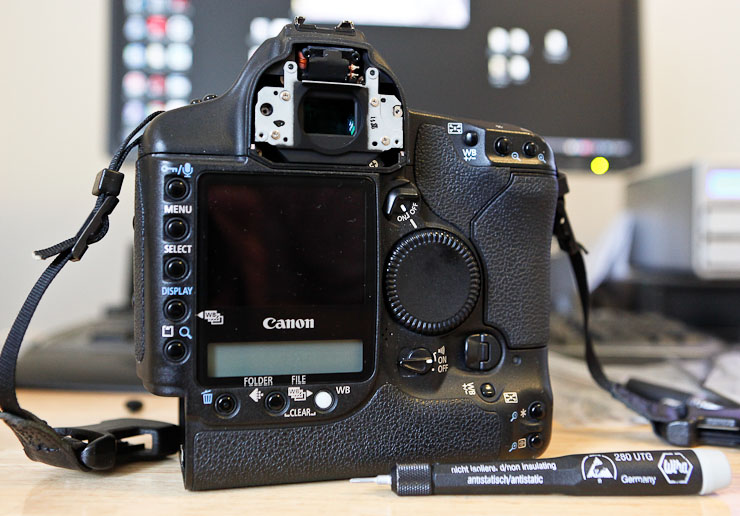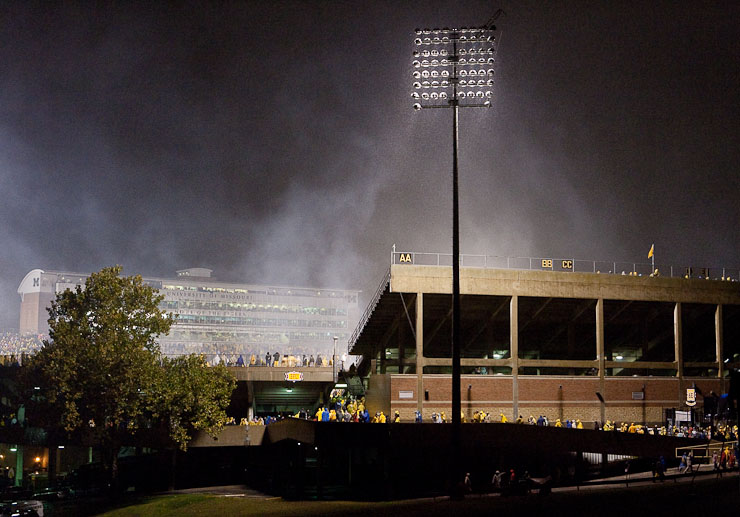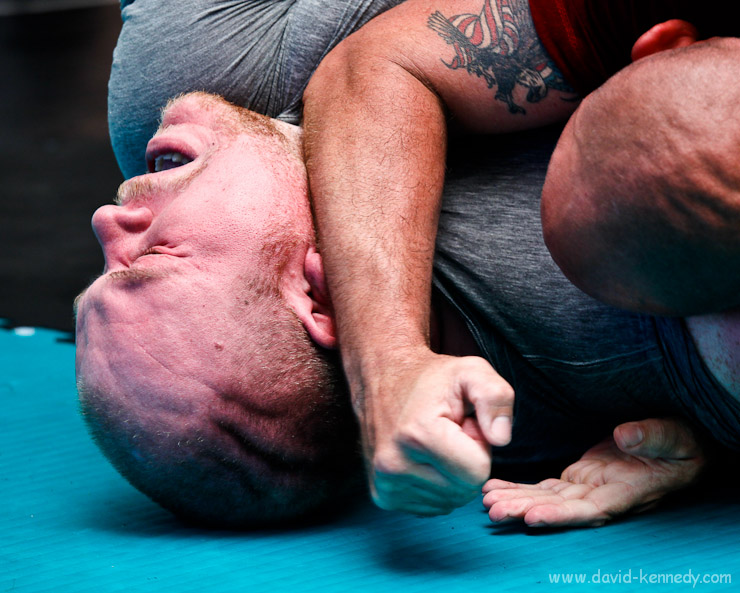
A brief history of CPS
While I believe that customer service should be important to all businesses great and small, it’s clear that it isn’t always the case. So when a company does something for one of its customers that is above and beyond all expectations, it’s a good feeling. It’s also something that should be recognized by the end customer and held up as an example of loyalty-earning service. There was a lot of complaining two years ago, when Canon Professional Services transitioned into a fee-based, tiered program.
I recall a few people asking why they should have to pay for “better service,” and I scratched my head. The airlines have had a tiered fee structure for years: pay the base rate and sit in coach, but pay them several dollars more, sit in business class, and get better service. Pay even larger sums, and sit in first class with an even greater level of service. I had only been a member of CPS for a year when they changed up the program, but I have to say that I’ve seen only improvements in the past two years. Sure, Nikon Professional Services doesn’t charge (yet), but that’s in part because they’ve cut costs by firing some of their beloved NPS representatives, such as Carol Fisher, who used to represent Nikon at photojournalism programs such as the University of Missouri.
So, for the past two years I’ve paid $100 per year and received a discount of 30% on repairs plus several equipment loans for evaluation.
The problem
So what is this all about? Last week I sent in my 550 EX Speedlite that I damaged in a shoot for my Advanced Techniques class in my second semester at MU. It’s sat on a shelf for close to two years after I melted its diffuser from an hour of firing at 1:1 on manual. Before asking, the answer is that I wasn’t thinking at the time. One of the last photographs that the flash helped me to make is at the top of this post. Both of my 550 EX flashes were mounted on light stands and firing against the white walls of the mixed martial-arts gym, Hulett House. Of course an hour of shooting at full power will do bad things. But how bad?
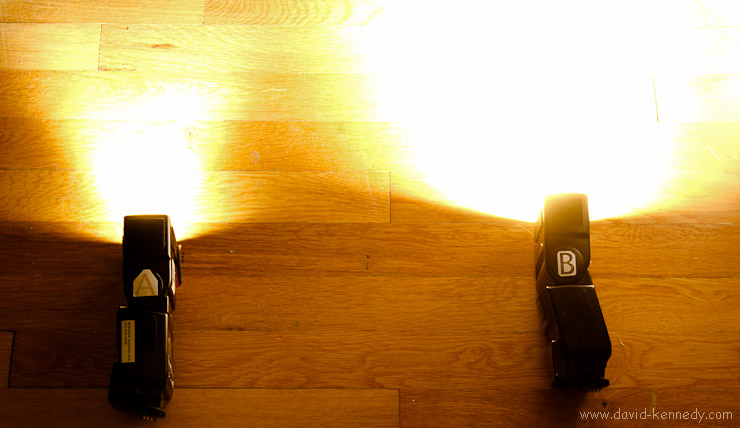
While behaving normally under E-TTL II mode, my 550EX that I had labeled “B” (for grouping purposes in wireless flash with the Canon ST-E2 transmitter) would only fire on full power in manual mode. The photo above shows just how badly the Speedlite had been damaged: both are supposed to be firing at 1/16 power, but the only one doing that is the flash on the left. So, after two years of my 550EX “B” Speedlite working only as a paperweight, I decided to send it in to CPS to be repaired and then sell it to recoup the cost of the repair.
An aside:
I have an odd hang up about broken gear: ultimately, I’d rather fix it and sell it to someone to recoup the repair costs than to let it rot on the shelf indefinitely. This is what I did a few years ago when I bought an Olympus 21mm lens off of eBay that turned out to be woefully scratched. I sent it into a man out in Colorado who gave it a new lens coating and then sold it, barely making up for the cost of the lens plus its repair.
Resolution
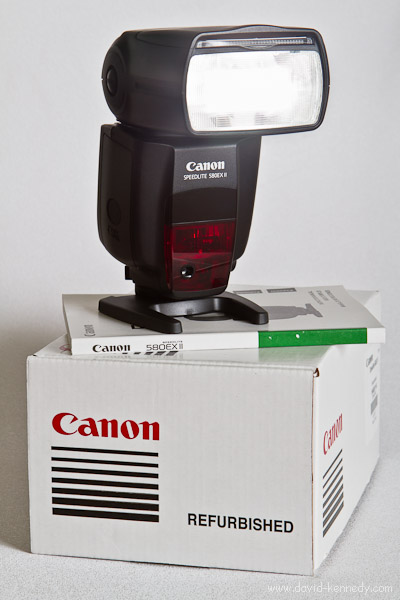
Last Thursday I packed up the 550 EX and shipped it FedEx to Canon’s Newport News, Virginia factory service center. One of the things I’ve come to appreciate about living in North Carolina is that FedEx Ground will get a package to Canon overnight. On Friday I approved the repair that was estimated to cost far less than I had mentally prepared for: only $77.
On Monday morning I received an e-mail that the factory was out of parts to repair the (discontinued) 550 EX, so they would be replacing it…with a 580 EX Mk. II Speedlite! I am completely convinced this would not have happened had I not been a member of Canon Professional Services.
Today, my Canon-refurbished 580 EX Mk. II arrived…and it doesn’t have a scratch on it. Sure, am I excited that I received a flash that retails for more than $450 by paying $77 and trading in my old unit? Absolutely. But it would have been far easier for Canon to tell me that they don’t have parts any more and simply ship my old flash back to me in its damaged state. This is the kind of thing that makes me think twice about ever switching brands–my loyalty has been earned with time, but it was renewed once more this afternoon when the package arrived.
Well done, Canon. Kudos on raising the bar for CPS!
